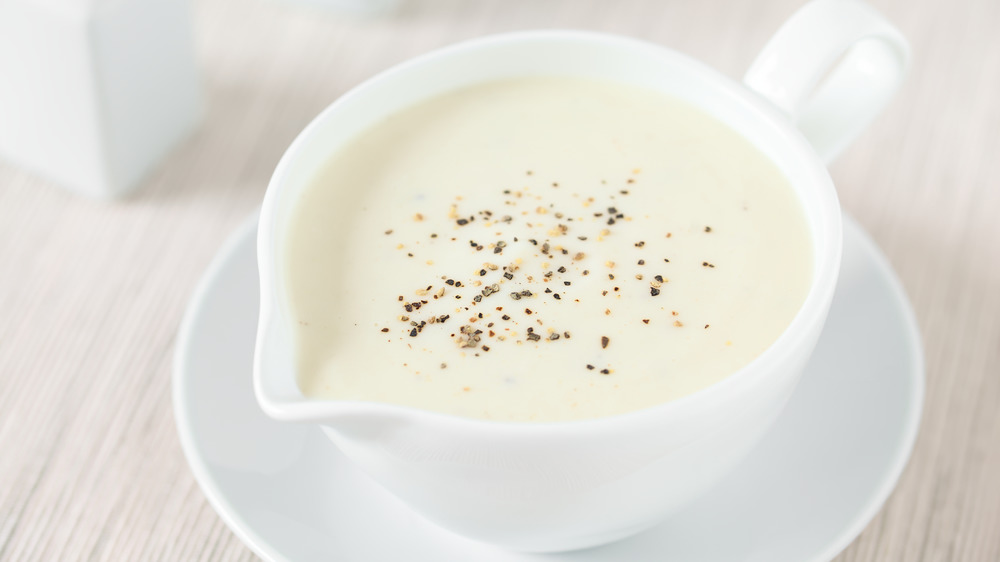The Real Difference Between Hollandaise Sauce And Béchamel
Have you heard of the sauces meres, also known as the "mother" sauces? In the culinary arts, this term refers to the five French sauces that every chef must master. The building blocks for hundreds of other sauces, the mother sauces were first classified as such in the early 19th century by French chef Antonin Careme (via Everyday Health). They were later updated and published by Auguste Escoffier, the famous chef, restaurateur and writer who is credited with modernizing traditional French cooking (via Escoffier School of Culinary Arts).
One of the mother sauces is velouté. Recognizable by its familiar blonde hue, this is a versatile stock-based sauce to which wine, cream, herbs, and other additions such as shallots or meat drippings can be added. It's the basis for white wine sauce and the famous lemony French suprême sauce (via The Spruce Eats).
Another mother sauce, sauce tomat, differs from Italian tomato sauce. It consists of tomatoes cooked in pork fat, aromatics, and veal stock, cooked to a rich, complex reduction. Herbal sachets of fresh thyme, parsley and bay leaves are added as the stock simmers and a roux is traditionally added to thicken the sauce (via MasterClass). Sauce Tomat can be served with rice, fish, pasta, poultry, pork, beef, potatoes, and more.
Espagnole (Spanish) sauce is truly a "base" sauce. Created by August Escoffier, its intense flavor comes from roasted veal bones, and it is the basis for bourguignonne, mushroom, madeira, and port wine sauces.
Hollandaise and béchamel are the richest "mother" sauces
The richest of, and most famous of the five mother sauces, are hollandaise and béchamel. They be confused because their color and texture often look similar, but they are actually quite different.
Béchamel is the classic French white sauce. It's often thought of a cream sauce, but it rarely has any cream in it. Rather, it is based on a basic roux of flour, butter, and milk. It's often served with white meats such as chicken as well as eggs and vegetables (via What's Cooking America). Béchamel serves as the basis of many other sauces including cheddar cheese sauce, and in casseroles or soufflés according to The Spruce Eats. Though the French typically season it simply with salt and pepper, others steep a bay leaf and/or a whole onion studded with cloves into the milk, and the Italians often add nutmeg (via Escoffier School of Culinary Arts).
Rich and buttery, Hollandaise is probably the most well-known of the mother sauces, according to the Escoffier School. Hollandaise is made of an emulsification of egg yolks and butter, lemon juice, and salt (via Kitchn). In the U.S., Hollandaise's most popular application is served over eggs Benedict. But Hollandaise is also a classic finishing sauce for vegetables, including asparagus, artichokes, and broccoli, according to the Escoffier School.
Another popular sauce is Béarnaise, which is actually a variation on Hollandaise. Rather than lemon juice, however, Béarnaise sauce derives its acidity from white wine vinegar. It has extra depth of flavor from the addition of shallots and fresh herbs, such as chervil and tarragon (via Kitchn). When it comes to using them yourself, now you'll have the differences handy, and what dishes go best with each.

